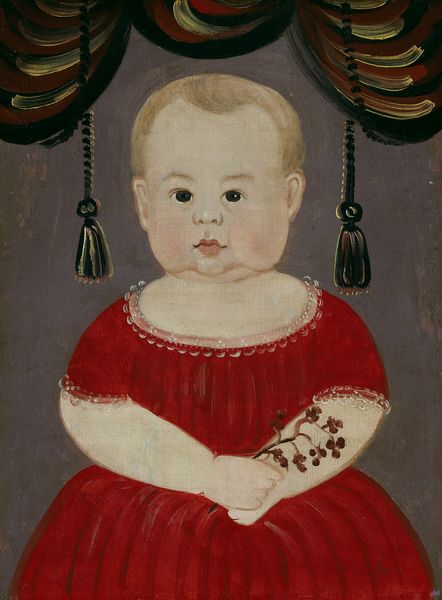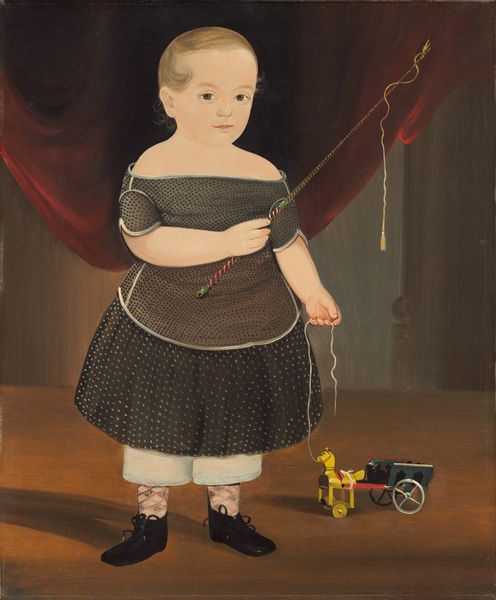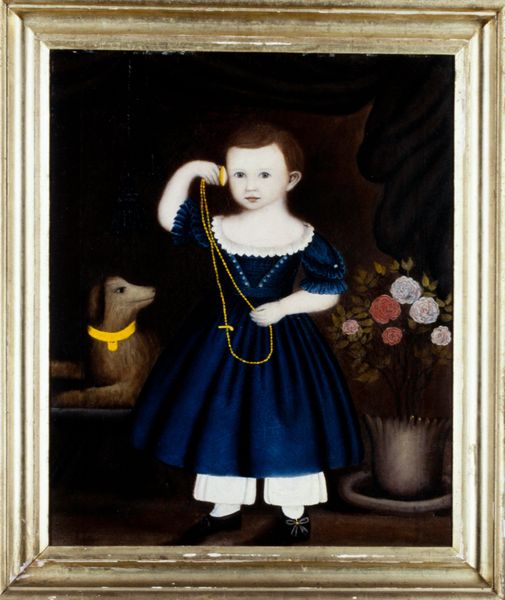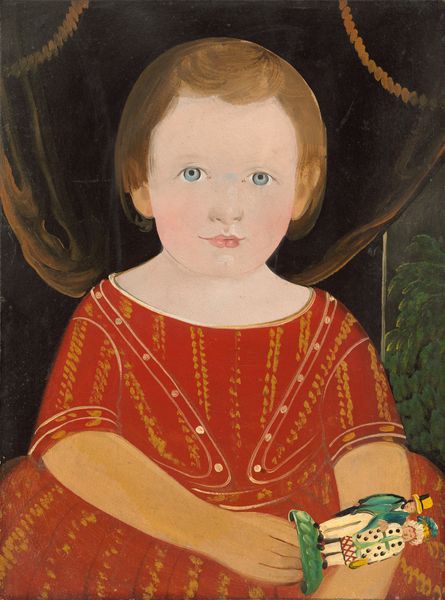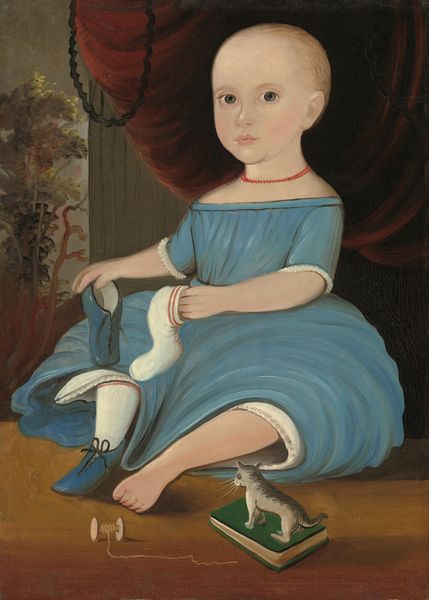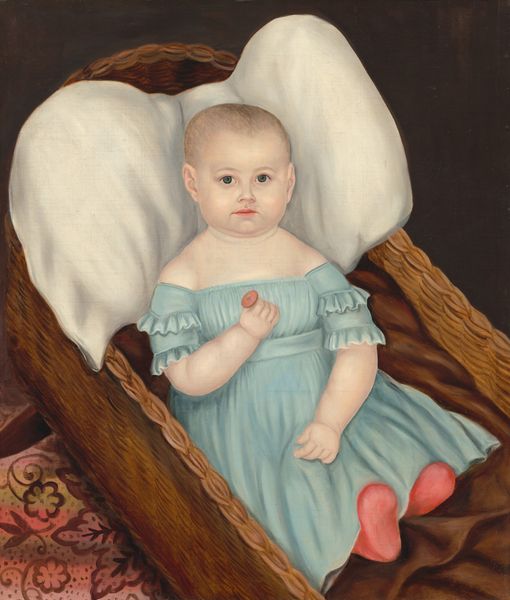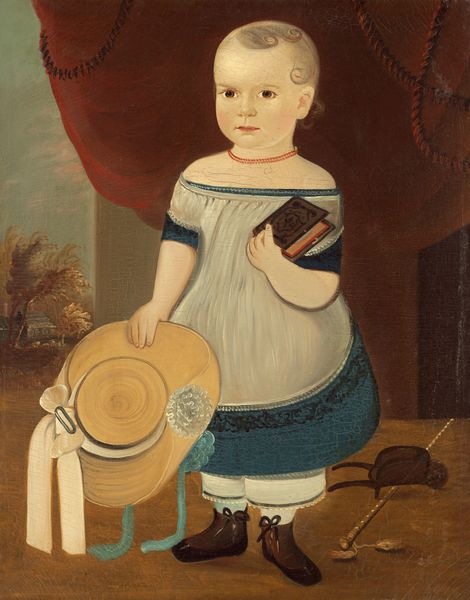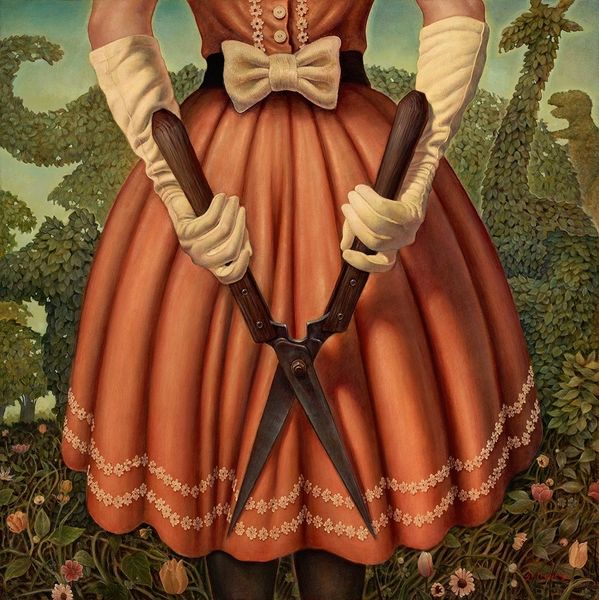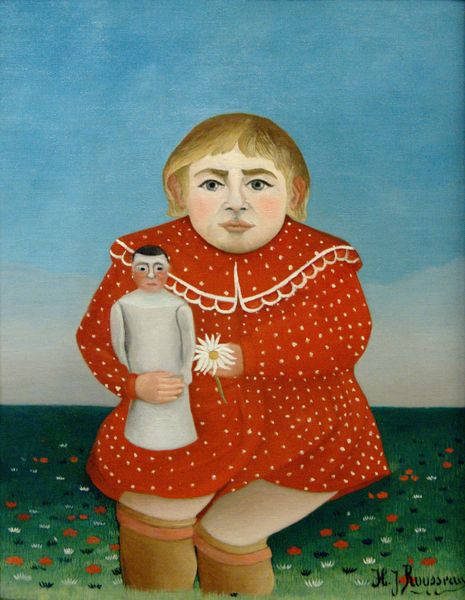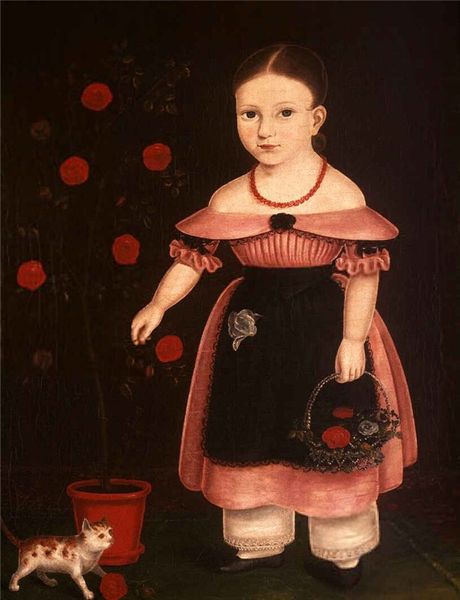
oil-paint
#
portrait
#
oil-paint
#
figuration
#
oil painting
#
romanticism
#
genre-painting
#
portrait art
Dimensions: overall: 61 x 50.9 cm (24 x 20 1/16 in.) framed: 67.9 x 57.4 x 5 cm (26 3/4 x 22 5/8 x 1 15/16 in.)
Copyright: National Gallery of Art: CC0 1.0
Editor: Here we have William Matthew Prior's "Little Miss Fairfield" from 1850, rendered in oil paint. The painting has this striking, almost dreamlike quality... maybe a bit eerie, actually, with that red dress and fixed stare. What leaps out at you when you look at this piece? Curator: Eerie is a good word! I see a liminal space between sentimentality and something bordering on unsettling, doesn’t quite fit. It reminds me a little of looking through old family photo albums – that mix of tenderness and disconnect. Notice how flat the perspective is – and yet, look at the rabbit. Do you see the slight shadowing he employed there? It’s like a stage set, isn’t it? What do you make of that rabbit? Editor: It is definitely a striking choice! I see it as adding innocence to this quite intense portrait. She is gripping to it so tightly. Curator: Exactly. That toy – it’s her anchor. It represents her childhood. Do you think it perhaps suggests the restrictions placed on her gender and social class? We must keep in mind, this was the pre-photography era. Her family clearly sought a lasting commemoration, but there’s an unsettling, folksy aspect too. Think about Prior himself – this was someone who painted portraits cheaply. It certainly speaks volumes. Editor: Absolutely, that really gives it more depth to the piece beyond my initial impression! It is wonderful how an affordable artform can encapsulate so much social history. Curator: Precisely! And sometimes, that lack of polish gives you a rawness, a vulnerability you won't find in more refined works. Food for thought, indeed!
Comments
No comments
Be the first to comment and join the conversation on the ultimate creative platform.

